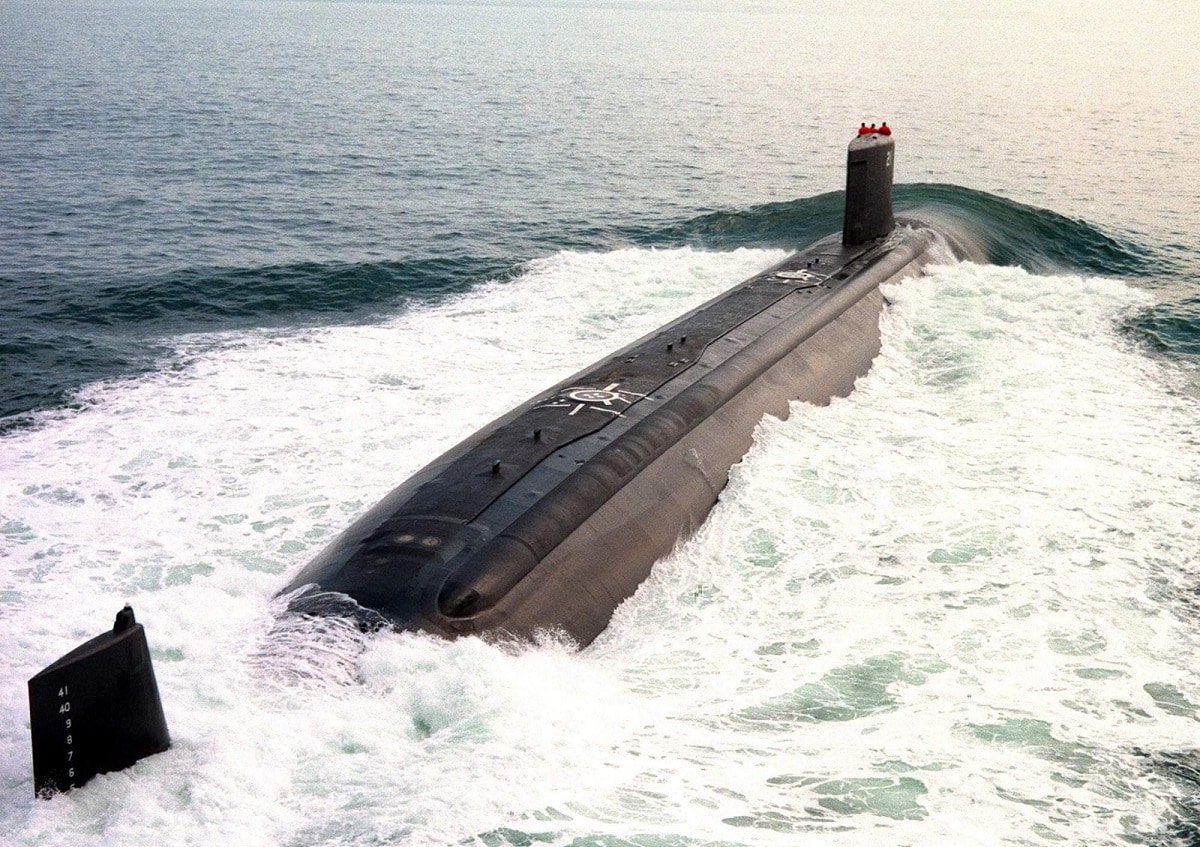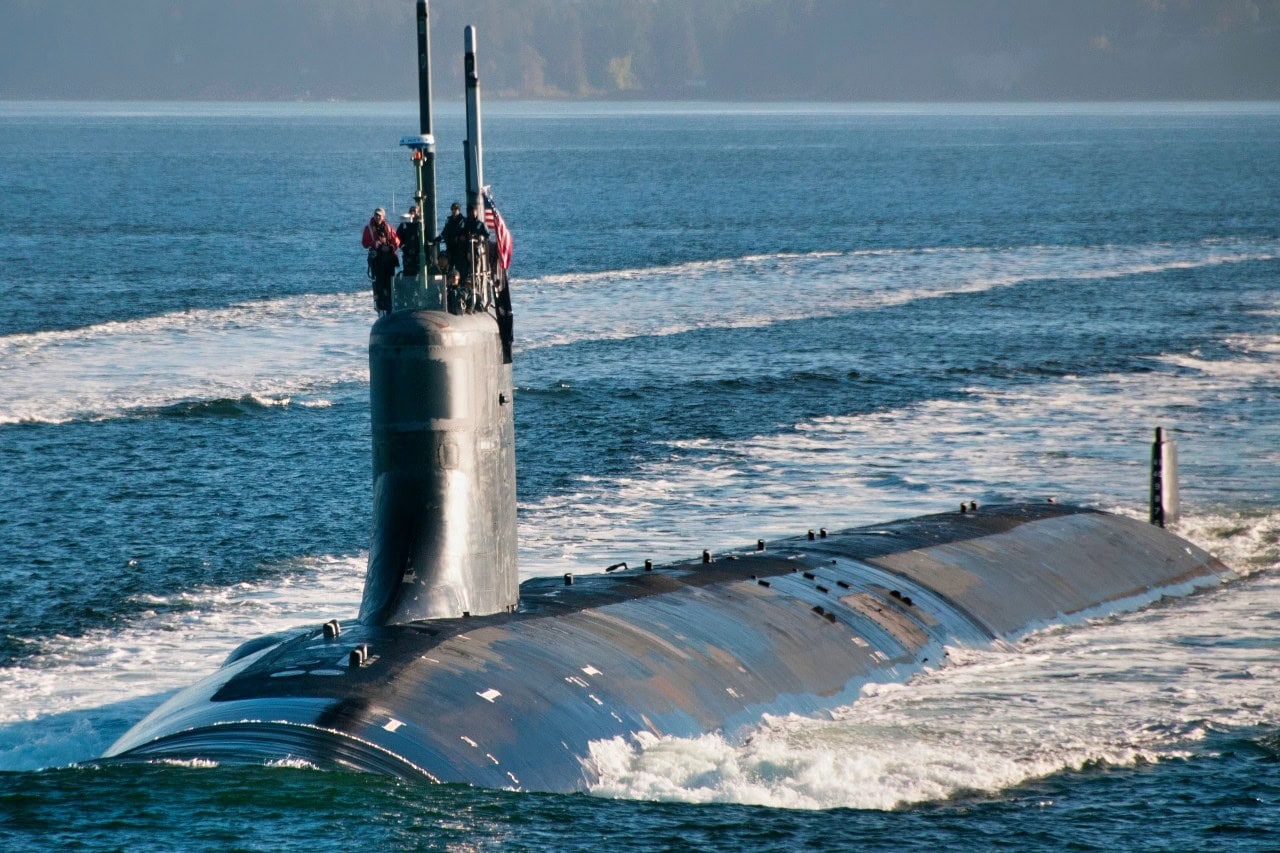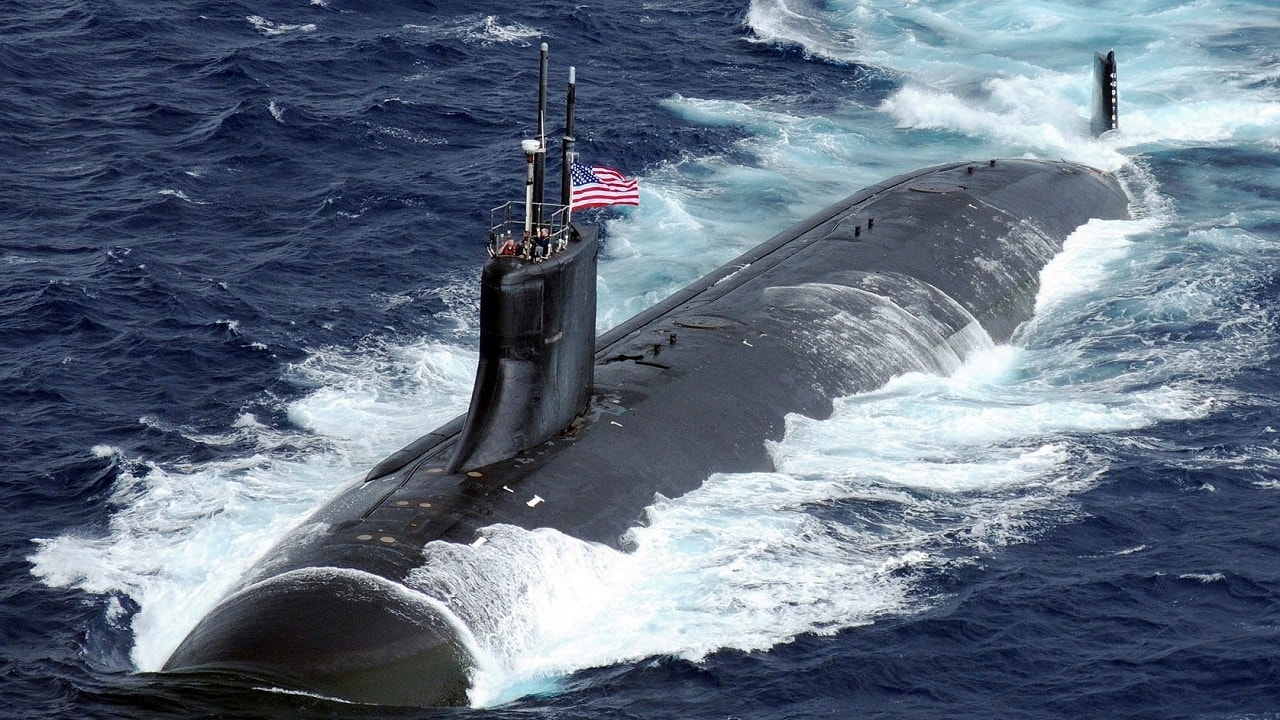Summary and Key Points: The USS Connecticut (SSN 22), a Seawolf-class nuclear fast-attack submarine, remains in port for extensive repairs after grounding on a seamount in the South China Sea in 2021.
-The repair process has been slow due to a combination of shipyard delays, a shortage of workers, and the difficulty in finding spare parts for a class of submarines no longer in production.

Seawolf-class. Image: U.S. Navy.
-The Navy estimates the Connecticut will be ready by September 2025, at a cost of $40 million in repairs.
-While the submarine’s advanced capabilities, including Tomahawk strikes and intelligence gathering, are crucial, the delays highlight a broader issue of maintenance backlog.
Seawolf-Class Submarine: It Hit An Underwater Mountain and Kept Going
A valuable U.S. Navy submarine is still at port for repairs four years after it hit a seamount in the South China Sea in 2021. The USS Connecticut, a badly damaged Seawolf-class nuclear fast-attack sub, had to make an emergency repair stop in Guam and San Diego after the incident.
Now, the boat is in a serious repair phase at Puget Sound Naval Shipyard in Bremerton, Washington, and will not be ready to take to the seas again until the third quarter of 2025.
The Navy has kept details of the process under wraps as all activities of nuclear subs, including repairs, are considered classified. The Navy has only three Seawolf-class boats. Numerous subs of all classes are in port for maintenance and this makes the repair process for the Connecticut long and arduous because there are backlogs that create more downtime.
The Production Run for the Seawolf-class Was Limited
The Seawolf-class was expensive at $3.5 billion each. They were meant to replace the Los Angeles-class fast attack subs, but the end of the Cold War and the resulting “peace dividend” of reduced defense spending sidetracked and limited the program.
After the collision with the seamount in 2021, the Connecticut was given a detailed inspection by technicians and workers.
“USS Connecticut (SSN 22) completed a short docking at the Puget Sound Naval Shipyard & Intermediate Maintenance Facility earlier this year to undergo a thorough assessment of the damage sustained when it grounded on Oct. 2, 2021. Shipyard personnel documented the damage, which is located in the bow of the ship and the lower portion of the rudder. The assessment confirmed the ship can be fully restored for unrestricted operations,” the Navy explained.
Could the Connecticut Finally Be Ready?
NAVSEA provided an update that claimed the Connecticut would be ready by September of this year. The command said the work has cost $40 million as of FY2023. However, the repair facilities also needed attention, resulting in more delays to the Connecticut.
“Another aspect of the repair process is that the Navy has been doing upgrades to the Puget Sound Naval Shipyard due to the ever-present possibility of earthquakes in the area. There had to be new construction on the drydock where the Connecticut ported. Workers were forced to ‘drill holes for the installation of anchors inside the dry dock walls to enhance structural integrity,’” the Navy said.
No Changes Made on the Sonar Dome
The work on the Connecticut shows little progress on the outside of the sub. “Her sonar dome is still missing and, clearly, the boat has been idle for some time, with huge sections of its anechoic coating missing from its sail,” according to the War Zone.

PUGET SOUND, Wash. (Sept. 11, 2017) The Seawolf-class fast-attack submarine USS Jimmy Carter (SSN 23) transits the Hood Canal as the boat returns home to Naval Base Kitsap-Bangor. Jimmy Carter is the last and most advanced of the Seawolf-class attack submarines, which are all homeported at Naval Base Kitsap. (U.S. Navy photo by Lt. Cmdr. Michael Smith/Released)
One of the problems with fixing the Connecticut is that the Seawolf-class has been out of production for so long. There is no way that the workers can use existing spare parts and components from other boats to make the repairs easier and more efficient.
Shipyards also have a shortage of workers, a problem that has been well-documented. This has caused delays in maintenance efforts and in new submarine building.
Competing with Other Submarines that Need Maintenance and Repairs
As of 2023, 40 percent of all submarines were in some type of repair or maintenance period taking them away from critical patrol duties in the East and South China Seas to keep an eye on the activities of the Chinese navy.
There are also a shortage of repair facilities and drydocks that can keep the maintenance needs down to the shortest period possible.
The Need to Keep Up With China
The Navy considers the Connecticut to be extremely valuable since China is building so many warships. Workers at Bremerton are doing the best they can despite the delays.
The Connecticut is badly needed. Fast attack subs can serve as hunter-killers and also send their Tomahawk cruise missiles to punish the enemy. Connecticut can also collect intelligence, surveillance, and reconnaissance data.
What Did the Investigations Say?
The grounding of the Connecticut after the collision with the sea mount was avoidable, the Navy determined in 2022. The area of operations was poorly charted, and the crew failed to act in the most effective manner possible. “The grounding resulted from an accumulation of unit-level errors and omissions that fell far below U.S. Navy standards,” investigators wrote.
We will keep tabs on the Connecticut to see how work progresses and will let you know if it will be ready by this September or if more delays are on the way. Four years is a long time for repairs, which means the sub may have sustained more extensive damages than initially thought.
About the Author: Dr. Brent M. Eastwood
Brent M. Eastwood, PhD is the author of Don’t Turn Your Back On the World: a Conservative Foreign Policy and Humans, Machines, and Data: Future Trends in Warfare plus two other books. Brent was the founder and CEO of a tech firm that predicted world events using artificial intelligence. He served as a legislative fellow for U.S. Senator Tim Scott and advised the senator on defense and foreign policy issues. He has taught at American University, George Washington University, and George Mason University. Brent is a former U.S. Army Infantry officer. He can be followed on X @BMEastwood.

